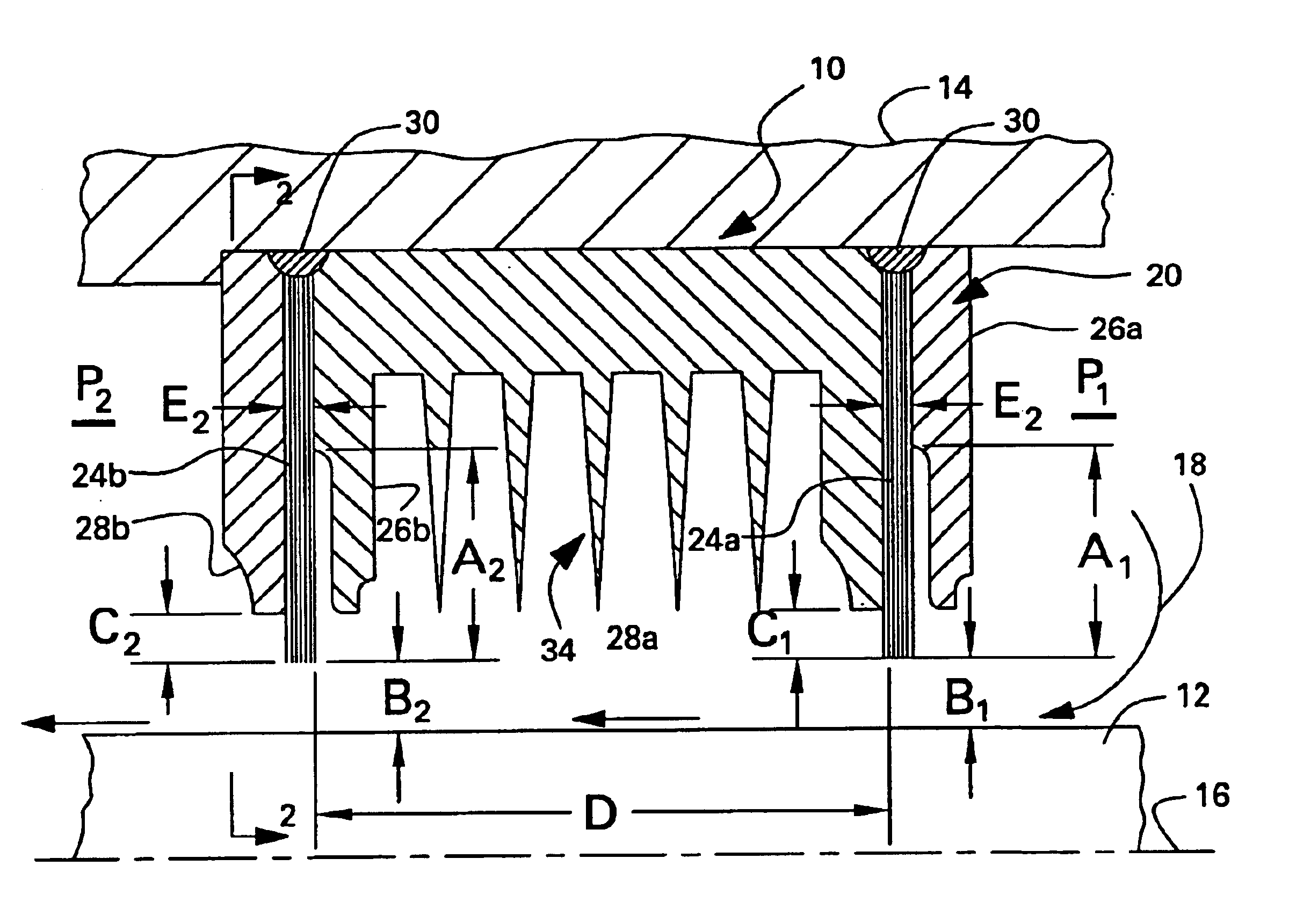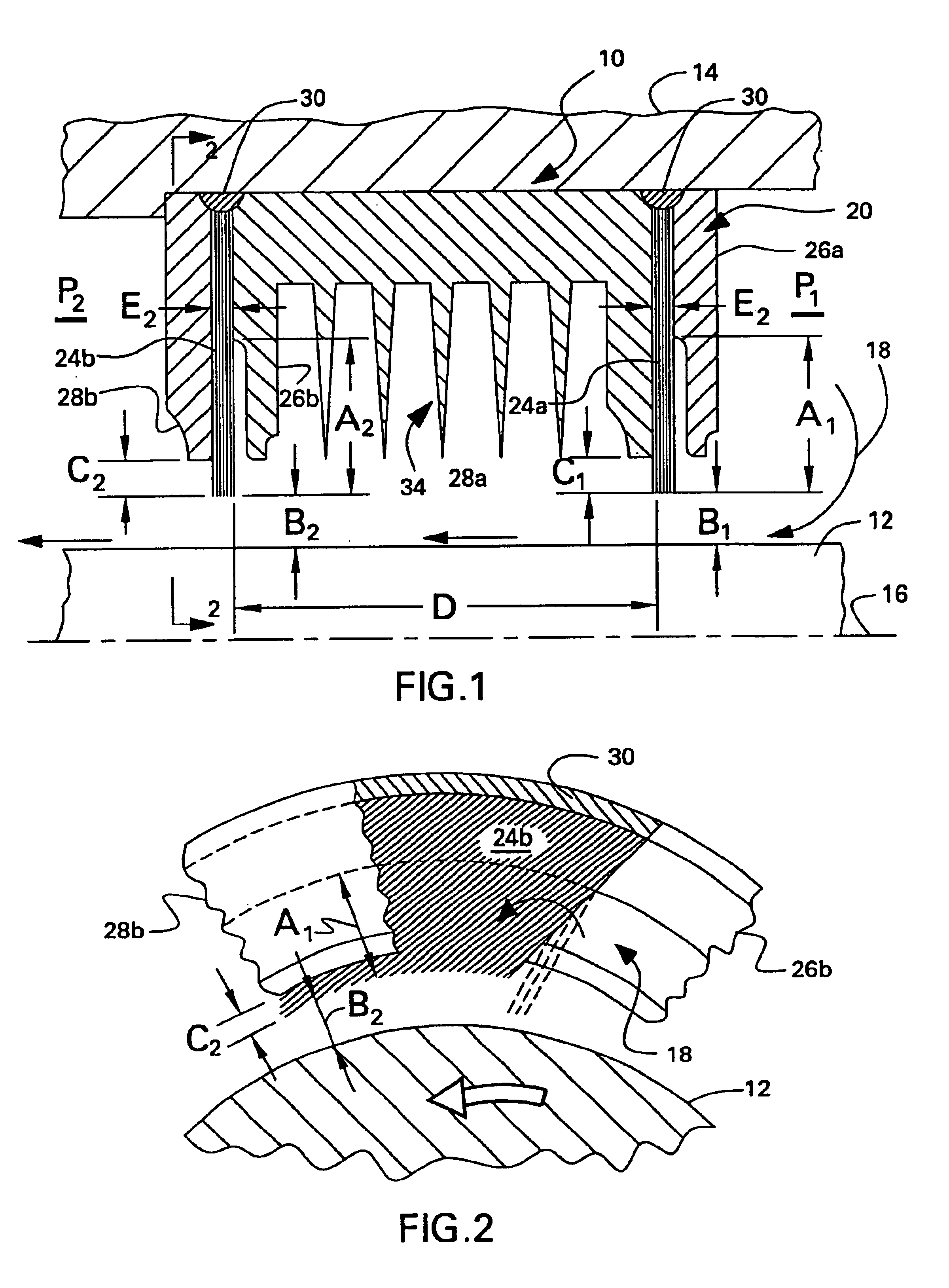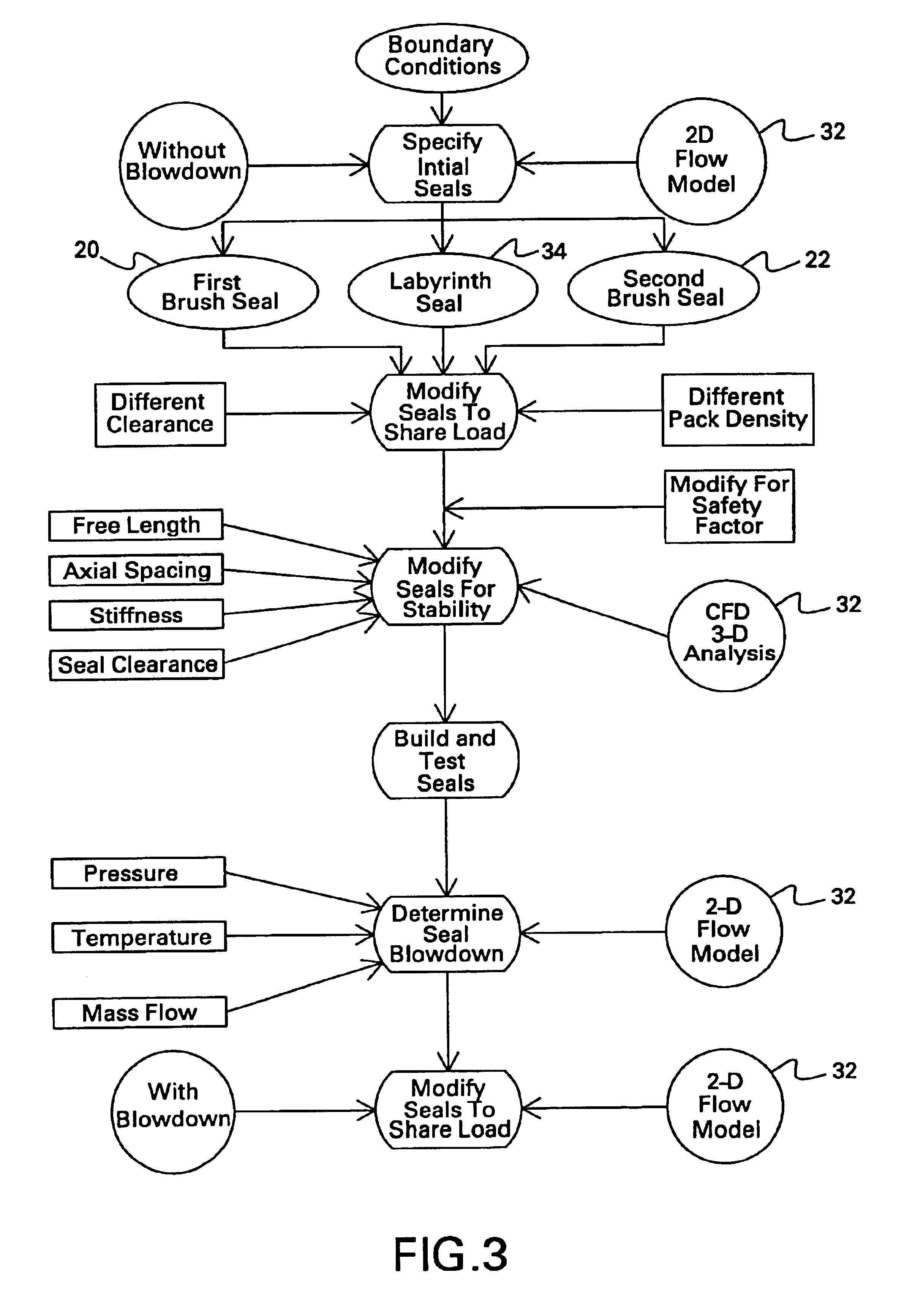In situ load sharing brush seals
a brush seal and load-sharing technology, applied in the field of rotating seals, can solve the problems of excessive leakage, plastic deformation or fatigue failure, and the ability to seal very high differential pressures in excess of 400 psid is again limited to substantially less than twice the 400 psid limit, and additional series brush seals in excess of two have no practical capacity of sealing, so as to ensure rotational stability
- Summary
- Abstract
- Description
- Claims
- Application Information
AI Technical Summary
Benefits of technology
Problems solved by technology
Method used
Image
Examples
Embodiment Construction
Illustrated in cross section in FIG. 1 is a multistage annular seal 10 disposed concentrically around an annular land 12 in the exemplary form of a rotor shaft. The seal is suitably mounted in an annular seal support 14 coaxially about an axial or longitudinal centerline axis 16 of the rotor shaft.
The seal is configured in FIG. 1 for use in large industrial gas or steam turbine engines, with the seal being a stationary or stator component surrounding the rotating shaft. Alternatively, the land 12 may be stationary, with the seal being mounted for rotary movement relative thereto.
In either configuration, the seal and land experience relative rotation during operation in the engine, and the seal is configured for sealing differential pressure maintained on opposite axial sides of the seal. For example, a fluid 18, such as steam, is maintained on the right side of the seal at a high pressure P1 and is effectively sealed by the multistage seal for minimizing leakage between the seal and...
PUM
 Login to View More
Login to View More Abstract
Description
Claims
Application Information
 Login to View More
Login to View More - R&D
- Intellectual Property
- Life Sciences
- Materials
- Tech Scout
- Unparalleled Data Quality
- Higher Quality Content
- 60% Fewer Hallucinations
Browse by: Latest US Patents, China's latest patents, Technical Efficacy Thesaurus, Application Domain, Technology Topic, Popular Technical Reports.
© 2025 PatSnap. All rights reserved.Legal|Privacy policy|Modern Slavery Act Transparency Statement|Sitemap|About US| Contact US: help@patsnap.com



